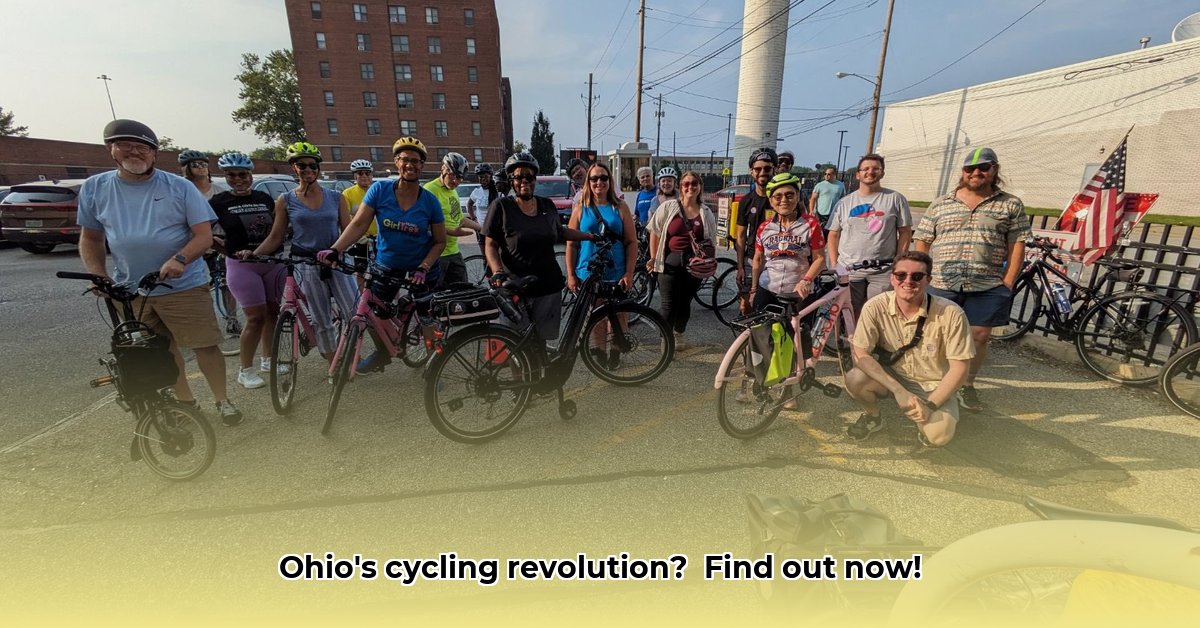
Solon, Ohio, isn't just another suburb; it's a testament to how community passion can transform a town's infrastructure and spirit. This isn't a story about a few cycling enthusiasts; it's about how a shared vision—a greener, healthier, and more connected community—fueled a grassroots movement on two wheels, rolling towards a brighter future. This narrative explores their journey, the challenges they overcame, and the actionable steps other communities can take to replicate their success.
From Seed to Success: The Solon Cycling Story
The Solon cycling movement wasn't an overnight sensation. It began humbly with a few dedicated volunteers organizing group rides, teaching bike safety, and engaging with city officials. Early victories, even small ones like securing a single new bike lane, generated momentum and attracted more participants. Each success fueled further growth, turning a quiet initiative into a powerful community force.
Building Bridges: Collaborative Partnerships
Solon's success hinged on collaboration. Local businesses recognized the economic benefits of a bike-friendly town and offered sponsorships and cyclist discounts. City officials, initially perhaps cautious, gradually embraced the environmental and economic advantages of cycling infrastructure. The project transcended mere bike lane additions; it integrated cycling into the very fabric of Solon life, creating a win-win for all. This collaborative spirit is a key lesson for other communities looking to foster similar transformations.
Navigating Challenges: Headwinds and Hard-Won Lessons
The path wasn't always smooth. Securing funding proved challenging, bureaucratic hurdles slowed progress, and volunteer burnout threatened the initiative. But these setbacks underscore valuable lessons: thorough, sustainable planning is crucial. Overcoming these challenges, however, made their subsequent successes even more rewarding and taught them invaluable lessons for others to learn from.
A Blueprint for Change: Replicating Solon's Success
Inspired by Solon's journey? Here’s a practical roadmap to creating a more bike-friendly community:
Phase 1: Assessment & Strategic Planning
- Needs Analysis: Conduct a thorough assessment of existing cycling infrastructure, identifying deficiencies and challenges. (e.g., insufficient bike lanes, dangerous intersections, lack of bike parking).
- Resource Inventory: Identify available resources: funding sources, potential volunteers, community support networks.
- Strategic Plan: Develop a phased plan with achievable, short-term goals to build momentum and demonstrate early success.
Phase 2: Cultivating Community Support
- Community Engagement: Organize engaging events—group rides, workshops, community forums—to foster participation and build excitement. Utilize social media and local news outlets for outreach.
- Strategic Partnerships: Build strong relationships with local businesses, securing sponsorships and promoting mutual benefits.
Phase 3: Advocacy and Implementation
- Government Relations: Present compelling data on cycling’s economic, health, and environmental benefits to city officials, highlighting the return on investment.
- Implementation: Collaborate with city planners and engineers to design and implement cycling improvements based on your strategic plan.
Phase 4: Sustaining Momentum
- Diversified Funding: Establish a diversified funding strategy, exploring grants, sponsorships, and community fundraising.
- Volunteer Management: Implement effective strategies to recruit, train, and retain volunteers, recognizing and valuing their contributions.
- Ongoing Engagement: Maintain consistent communication and community engagement to ensure long-term sustainability and continued support.
Measuring Success: Beyond the Numbers
While increased cycling rates and reduced cycling accidents provide crucial data, measuring success extends beyond mere statistics. Has cycling improved residents’ quality of life? Has it spurred conversations about sustainability? Has it generated economic opportunities? These qualitative aspects are just as important in evaluating the impact of your initiative.
Solon's Enduring Legacy: A Model for Change
Solon's cycling movement continues to grow, offering a powerful model for other communities. Their enduring success stems from collaboration, community engagement, and unwavering determination. Their journey serves as an inspiring example of what’s possible when communities work together to create a healthier, more vibrant environment. Will your community be next?
How to Build a Thriving Community Bike Advocacy Group: A Practical Guide
Key Takeaways:
- A successful bike advocacy group requires a holistic approach—combining community engagement, strategic partnerships, and effective advocacy.
- Consistent communication and adaptability are crucial for navigating challenges and sustaining momentum.
- Framing cycling as a solution to broader community issues—improved health, environmental sustainability, economic development—expands your reach and impact.
Actionable Steps to Success: A Five-Phase Plan
Phase 1: Assessment and Relationship Building: Conduct thorough needs assessments, engaging with residents and key stakeholders (city officials, businesses, community organizations) to understand local challenges and build alliances.
Phase 2: Coalition Building: Expand your reach by partnering with organizations sharing overlapping interests (pedestrian advocacy groups, environmental groups). A coalition amplifies your voice and resources.
Phase 3: Strategic Messaging: Frame your advocacy efforts within a broader community context, highlighting the benefits of cycling infrastructure for improved health, environmental sustainability and economic development.
Phase 4: Strategic Action: Prioritize short-term wins (bike racks, temporary lanes, community rides) to build momentum while developing a long-term vision for significant, sustainable change.
Phase 5: Ongoing Engagement and Evaluation: Maintain consistent communication, engage with the community, adapt to changing needs, and regularly evaluate the efficacy of your strategies.
PeopleForBikes’ Guide to Effective Local Bike Advocacy